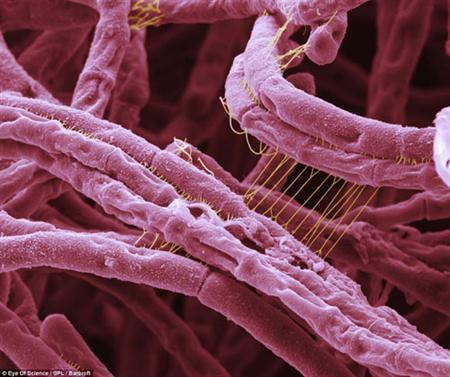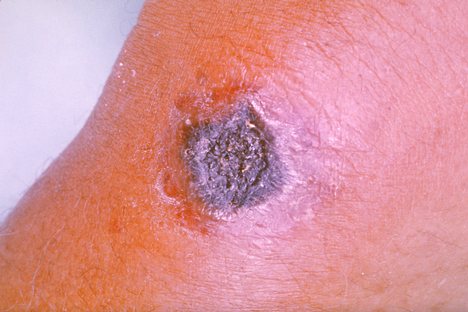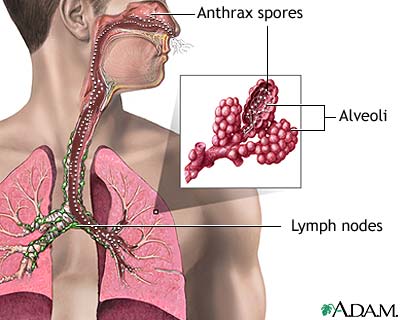Anthrax: Difference between revisions
| Line 18: | Line 18: | ||
===Description=== | ===Description=== | ||
<i>Bacillus anthracis </i> is a Gram-positive aerobic spore-forming bacterium. <i>B. anthracis</i> derived its name from the Greek word for coal because this pathogen can cause black lesions on the victim's skin. The bacterium is non-motile and non-hemolytic on blood agar. | <i>Bacillus anthracis </i> is a Gram-positive facultative aerobic spore-forming bacterium found in the soil. <i>B. anthracis</i> derived its name from the Greek word for coal because this pathogen can cause black lesions on the victim's skin. The bacterium is non-motile and non-hemolytic on blood agar. <i>B. anthracis</i> is found mostly in spore-form in the environment, but when it has infected a host it will germinate and replicate in essentially all body tissues. When <i> anthracis</i> is in the spore form, it is resistant to most adverse environments and can survive for many decades. | ||
==Pathogenesis== | ==Pathogenesis== | ||
Revision as of 13:33, 21 July 2013

Etiology/Bacteriology
Taxonomy
Domain: Bacteria
Phylum: Firmicutes
Class: Bacilli
Order: Bacillales
Family: Bacillaceae
Genus: Bacillus
Species: anthracis
Description
Bacillus anthracis is a Gram-positive facultative aerobic spore-forming bacterium found in the soil. B. anthracis derived its name from the Greek word for coal because this pathogen can cause black lesions on the victim's skin. The bacterium is non-motile and non-hemolytic on blood agar. B. anthracis is found mostly in spore-form in the environment, but when it has infected a host it will germinate and replicate in essentially all body tissues. When anthracis is in the spore form, it is resistant to most adverse environments and can survive for many decades.
Pathogenesis
Transmission
Infectious dose, incubation, and colonization
Epidemiology
Virulence factors
Clinical features
Cutaneous

Inhalation

Gastrointestinal
Diagnosis
Treatment
Prevention
Host Immune Response
References
1. Conway, Tyrrell. “Genus conway”. “Microbe Wiki” 2013. Volume 1. p. 1-2.
2. http://www.ncbi.nlm.nih.gov/pmc/articles/PMC1769905/
3. http://www.ncbi.nlm.nih.gov/pmc/articles/PMC2784286/
